In the early 2000s, the German Aerospace Agency (DLR) was developing innovative hyperspectral optical sensors in preparation for future space missions. To this end, it involved the scientific community by launching an "idea contest" for researchers (see this heritage publication). The object of the competition was the identification of sites on which to carry out "test" acquisitions with prototypes of sensors mounted on an aerial platform. The request obviously had to be justified with the intended use of the data, and with the characteristics of the observed area in relation to the applications of the future space mission.
Prof. Paolo Gamba, coordinator of the Remote Sensing Group at our university, prepared a proposal entitled "Hyperspectral data exploitation for urban land cover analysis”. The proposal was one of the 8 selected out of the 22 received by the German Agency. On 8th July, 2002, a DLR aircraft equipped with two hyperspectral sensor prototypes flew over the city of Pavia and over the Cravino Campus carrying out the acquisition of data on two different urban environments, namely the city center and university facilities. Over the years, these data sets have become a reference point for the international satellite remote sensing community; see the “GRSS Data and Algorithm Standard Evaluation website” portal of the IEEE.
Recently, however, the “Cravino” hyperspectral dataset has taken an extra step: Mathworks, the company that maintains and distributes the famous scientific computation software MATLAB, has decided to use them in their tutorials on the new "hyperspectral toolbox"!
If you wish to see the Cravino Campus as it appeared in 2002 to a hyperspectral sensor, you can look at the MATLAB tutorial pages:
https://it.mathworks.com/help/images/hyperspectral-image-classification-using-abundance-maps.html
https://it.mathworks.com/help/images/target-detection-using-spectral-signature-matching.html
Once again the city of Pavia rises to the chronicles of international remote sensing scientific arena, after appearing in the communication of the European Space Agency regarding the "take-off" of the European satellite Sentinel-2.








